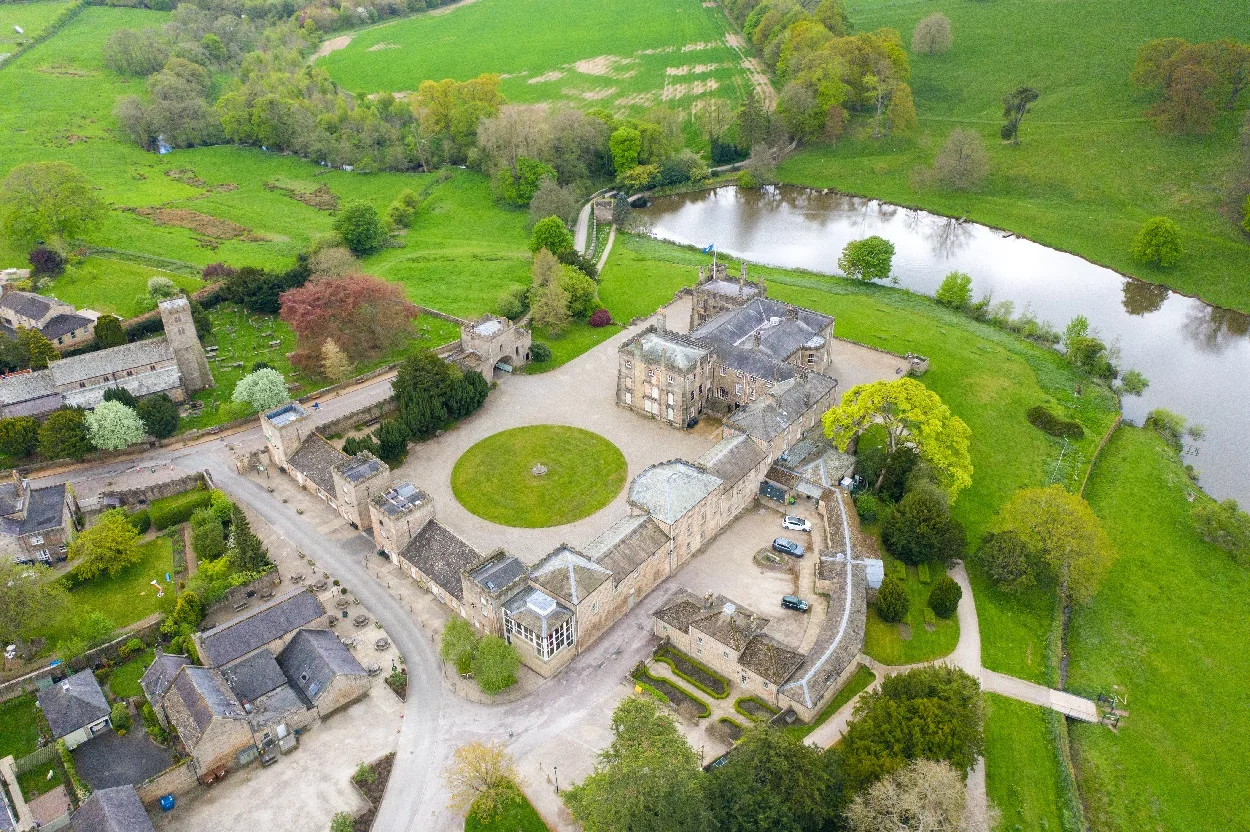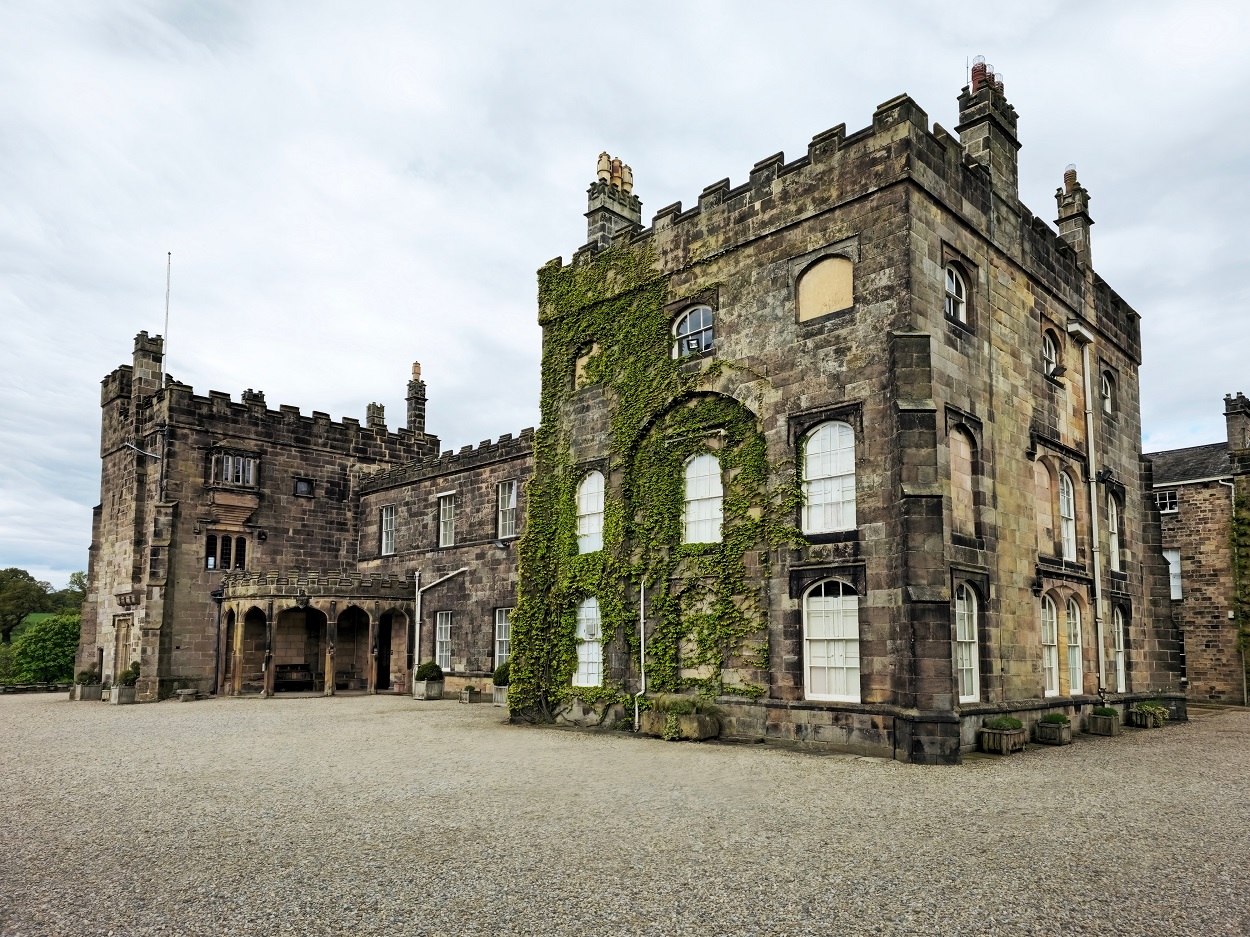Ripley Castle, a Grade I listed 14th-century castle and the ancestral seat of the Ingilby baronets goes up for sale.
The castle is located in the English town of Ripley, a short distance from Harrogate in Yorkshire.
In the 14th century, the castle and estate became part of the Ingilby family through the dowry of Edeline Thwenge, upon her marriage to Sir Thomas Ingleby (1290–1352).
Over the following centuries, the castle was the scene of several major events in English history.
In 1605, Sir William Ingleby (1546–1618) was involved in the Gunpowder Plot to commit regicide against King James I. Sir William allowed the plotters to stay at Ripley Castle whilst they procured horses, but was later acquitted of all charges for his involvement. Robert Wintour, one of the conspirators and Sir William’s nephew, was captured in 1606 and was hanged, drawn and quartered.
During the English Civil War, Sir William Ingleby (1594–1652), a staunch supporter of Charles I, is said to have hid in a priests hole at Ripley Castle following the routing of the king’s forces, the same time as Oliver Cromwell billeted there for the night.
Ripley Castle has remained in the ownership of the Ingilby family and is currently owned by Sir Thomas and Lady Ingilby. The castle survives as a grand mansion built with a central two-storey block flanked by a tower and a three-storey wing built from coursed gritstone and ashlar.
It was used as a set location in the 1976 Disney film “Escape from the Dark”, the BBC Television series “Gunpowder”, and Channel 5’s “Anne Boleyn”.
The sale of the castle and estate is being managed by Carter Jonas estate agents, who will place a listing on the market along with the sale price in the Autumn of 2024. The estate includes several lakes, a deer park, hothouses and a kitchen garden.
A statement by Sir Thomas and Lady Ingilby, reads: Most of the estate’s enterprises will continue to trade as normal and our valued clients, employees, and tenants, will be advised at the earliest opportunity of any changes to this plan”.
Header Image Credit : Shutterstock





